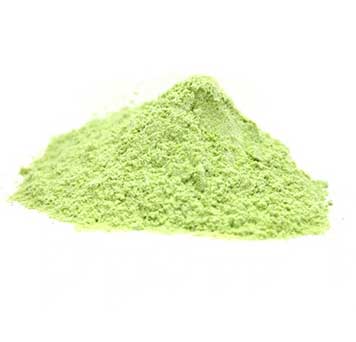
Sodium Bicarbonate Method for Efficient Carbon Dioxide Capture and Utilization Techniques
The Sodium Bicarbonate Process An Overview
Sodium bicarbonate, commonly known as baking soda, is a versatile chemical compound with a wide array of applications, ranging from food preparation to industrial processes. The sodium bicarbonate process refers to the methods and reactions through which this essential compound is produced, utilized, and transformed for various purposes. This article aims to explore the sodium bicarbonate process in detail, focusing on its significance, production methods, and applications.
Production of Sodium Bicarbonate
The primary method for producing sodium bicarbonate involves the Solvay process, which is a cornerstone of modern chemical manufacturing. Developed in the mid-19th century by the Belgian chemist Ernest Solvay, this process efficiently produces sodium carbonate (soda ash) and involves the reaction of sodium chloride (table salt), ammonia, carbon dioxide, and water.
Initially, ammonia is dissolved in water and then mixed with sodium chloride. Subsequently, carbon dioxide is bubbled through this solution, leading to the formation of sodium bicarbonate precipitate. The reaction can be summarized by the following equation
\[ \text{NaCl} + \text{NH}_3 + \text{H}_2\text{O} + \text{CO}_2 \rightarrow \text{NaHCO}_3 + \text{NH}_4\text{Cl} \]
The sodium bicarbonate precipitate is then filtered, dried, and thermally decomposed to produce sodium carbonate, with byproducts that can be recycled back into the process, making it economically viable and environmentally friendly.
Additionally, sodium bicarbonate can also be produced through the reaction of sodium carbonate with carbon dioxide and water under controlled conditions. This method, while less common, is significant for specialized applications, particularly in laboratories and small-scale operations.
Applications of Sodium Bicarbonate
sodium bicarbonate process

Sodium bicarbonate has an extensive range of applications across various sectors
1. Food Industry One of the most well-known uses of sodium bicarbonate is as a leavening agent in baking. Its ability to react with acids produces carbon dioxide gas, causing dough to rise.
2. Pharmaceuticals The compound is frequently utilized as an antacid to relieve heartburn and indigestion, neutralizing stomach acid effectively.
3. Cleaning Agent Sodium bicarbonate is a popular ingredient in many household cleaning products. Its mild abrasiveness and ability to neutralize odors make it an excellent deodorizer for refrigerators and carpets.
4. Environmental Applications The compound is gaining attention for its ability to neutralize acid mine drainage and remove heavy metals from contaminated water sources. Its use in environmental remediation showcases its versatility and eco-friendliness.
5. Fire Extinguishers Sodium bicarbonate is also found in certain types of fire extinguishers. When heated, it releases carbon dioxide gas, which can help smother flames.
6. Personal Care Products The compound's gentle exfoliating properties make it a common ingredient in skincare products. It can help balance the skin’s pH and absorb excess oil.
Conclusion
The sodium bicarbonate process plays a vital role in producing this essential compound, showcasing its multifaceted applications across different industries. From baking and health to environmental protection and cleaning, sodium bicarbonate demonstrates its importance in everyday life. Furthermore, the sustainability of the Solvay process and its ability to convert byproducts into usable materials make it a model for other chemical processes. As research continues into the broader implications of sodium bicarbonate, it is clear that this simple compound possesses remarkable potential, contributing significantly to both environmental sustainability and public health. In summary, the sodium bicarbonate process is not just a mere manufacturing technique but a vital part of modern chemistry that supports a cleaner and healthier world.
-
The Safety Challenges of Ammonium Nitrate FertilizerNewsJun.26,2025
-
The Critical Role of Mining ChemicalsNewsJun.26,2025
-
Shelf Life of Glacial Acetic Acid Food GradeNewsJun.26,2025
-
Enhancing PVC Longevity with 1,2,3-Benzotriazole InnovationsNewsJun.26,2025
-
China’s Dominance in Food Additive ProductionNewsJun.26,2025
-
Can Aluminum Hydroxide Replace More Toxic Alternatives?NewsJun.26,2025
-
PE and PP Plastics with Benzotriazole AdditivesNewsJun.12,2025
Hebei Tenger Chemical Technology Co., Ltd. focuses on the chemical industry and is committed to the export service of chemical raw materials.
-

view more DiethanolisopropanolamineIn the ever-growing field of chemical solutions, diethanolisopropanolamine (DEIPA) stands out as a versatile and important compound. Due to its unique chemical structure and properties, DEIPA is of interest to various industries including construction, personal care, and agriculture. -

view more TriisopropanolamineTriisopropanolamine (TIPA) alkanol amine substance, is a kind of alcohol amine compound with amino and alcohol hydroxyl, and because of its molecules contains both amino and hydroxyl. -

view more Tetramethyl Thiuram DisulfideTetramethyl thiuram disulfide, also known as TMTD, is a white to light-yellow powder with a distinct sulfur-like odor. It is soluble in organic solvents such as benzene, acetone, and ethyl acetate, making it highly versatile for use in different formulations. TMTD is known for its excellent vulcanization acceleration properties, which makes it a key ingredient in the production of rubber products. Additionally, it acts as an effective fungicide and bactericide, making it valuable in agricultural applications. Its high purity and stability ensure consistent performance, making it a preferred choice for manufacturers across various industries.











